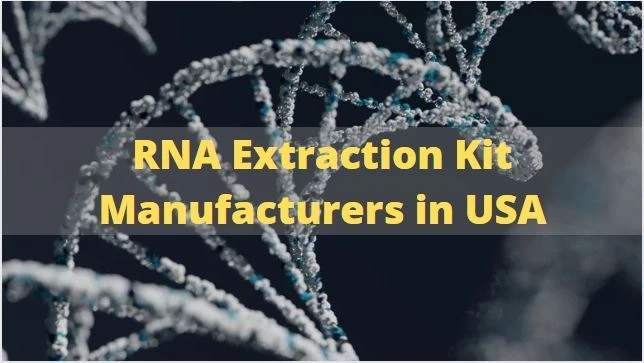Nucleic acid extraction is one of the most vital processes in molecular biology. Various applications, such as RT-PCR, cDNA library preparation, microarrays, and other PCR-based assays need high-quality contamination-free RNA yields. Researchers and lab personnel require a rapid and efficient viral RNA isolation method that provides high purity samples with maximal yield for all these analyses.
RNA is delicate and the purification process presents several challenges, like ribonuclease (RNAse) contamination. RNAses are all around us and even a very small amount can ruin RNA-based experiments. This is why researchers have to observe great precautions to achieve a good RNA yield, such as the use of RNase-free reagents, dedicated pipettes, glassware, gloves, and working in an RNAse-free environment need to be followed.
Commonly used RNA extraction strategies include:
- Organic extraction method
- Spin-column based method
- Magnetic bead-based method
Organic Extraction
Organic extraction involves:
- Lysis in a monophasic solution of phenol and guanidine isothiocyanate
- Chloroform is added to create a phenol-chloroform mixture which is immiscible with water
- Centrifugation is done to form two distinct phases - lower or organic with denatured proteins and upper or aqueous phase with the RNA
- The aqueous phase with the RNA is removed by pipetting
- RNA is precipitated with isopropanol
While organic extraction is scalable, it is difficult to automate and is not amenable to high-throughput processing. Manual handling of a large number of samples, phase separation, and pipetting of the aqueous phase are tricky, to say the least.
Spin-Column Based Extraction
In the spin-column-based extraction method, the binding element usually contains glass particles or powder, silica matrices and ion-exchange carriers. RNA binding is optimized with buffer solutions and precise pH and salt concentrations. The lysed sample is passed through the silica membrane using centrifugation. The RNA binds to the silica gel at the right pH. Impurities are removed by washing the membrane, and flow-through is discarded. RNA is subsequently eluted with RNase-free water.
Column-based RNA extraction is fast and reproducible but protein or nucleic acid contamination may occur if the sample amount is large or lysis remains incomplete. Incomplete lysis means poor viral RNA yields.
Magnetic Bead-Based Extraction
The magnetic bead-based RNA extraction method utilizes magnetic beads and reagents for RNA extraction. The sample is lysed in a buffer with RNase inhibitors and then magnetic beads are allowed to bind RNA molecules. The magnetic beads are collected back in an external magnetic field. Once the supernatant is removed, the beads are washed in a suitable buffer. RNA is eluted with RNase-free water into a solution, and the supernatant is transferred.
The magnetic bead method minimizes the risk of clogging, is scalable, and gives high-throughput separation, and automation. This is why magnetic bead-based nucleic acid extraction kits are now preferred by SARS-CoV-2 and testing and research labs, medical and clinical labs, biotech or pharma companies and hospitals.
If you are looking for a magnetic beads-based, high-quality viral DNA/RNA extraction kit or Ampure XP alternative, call one of the most trusted RNA extraction kit manufacturers in the USA, MagBio Genomics at (301) 302-0144.



